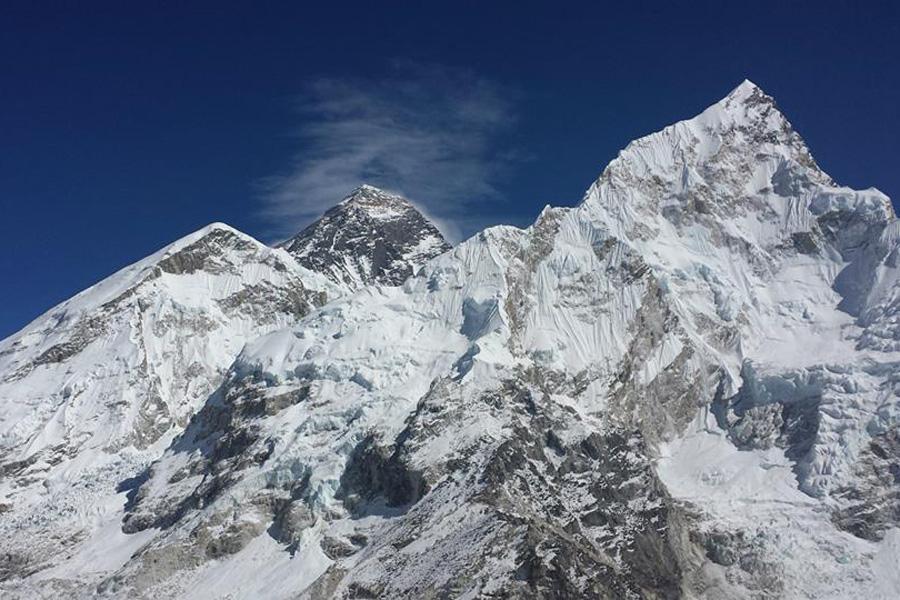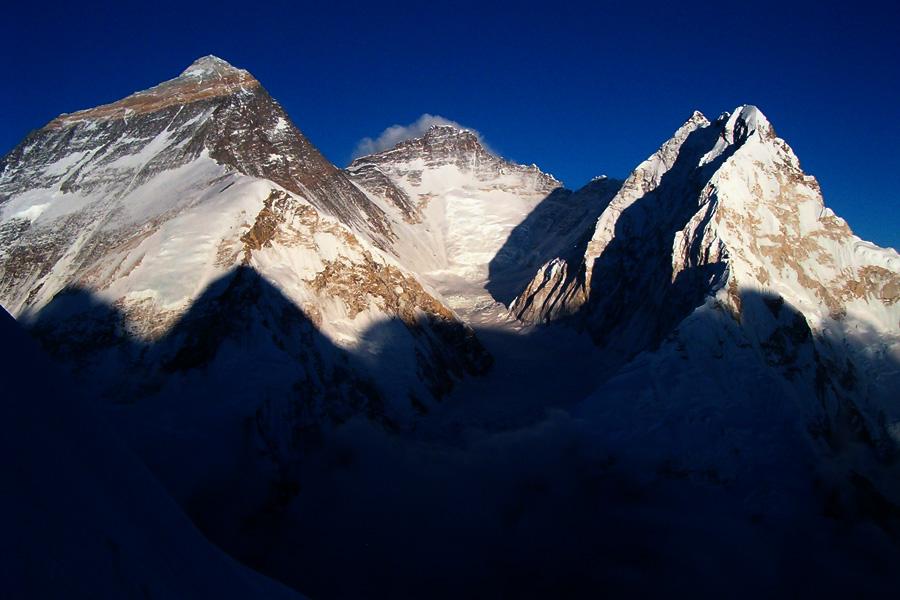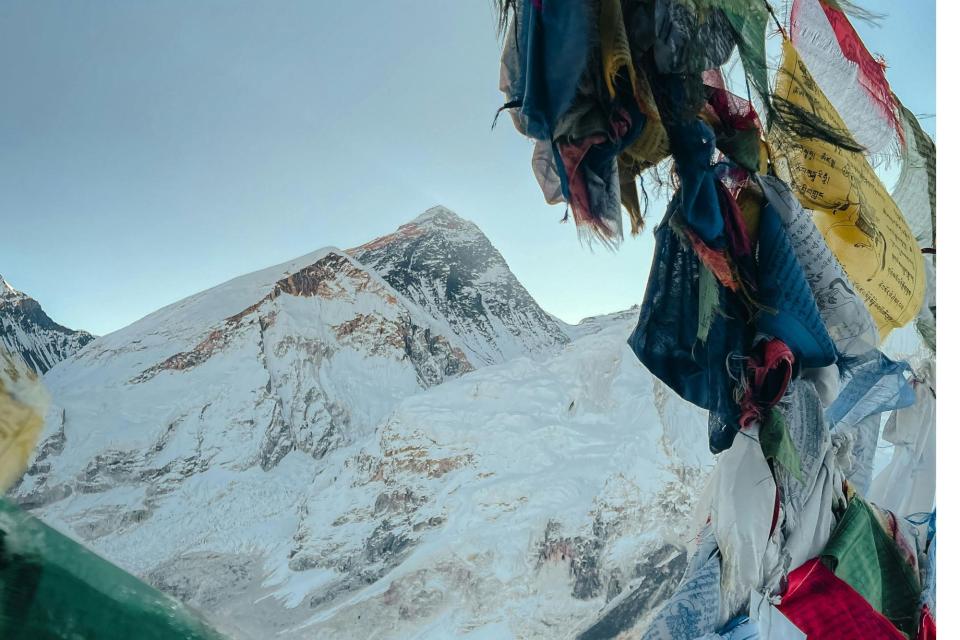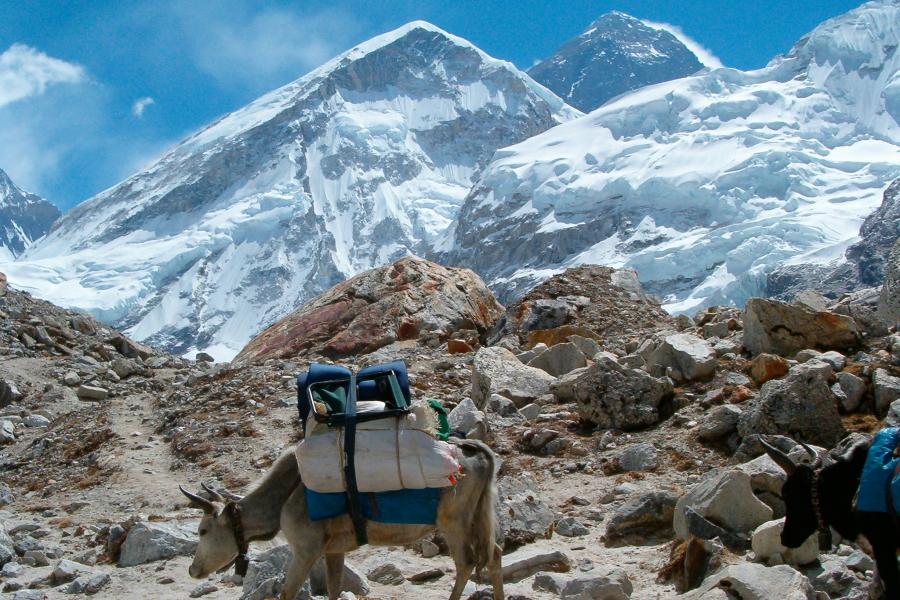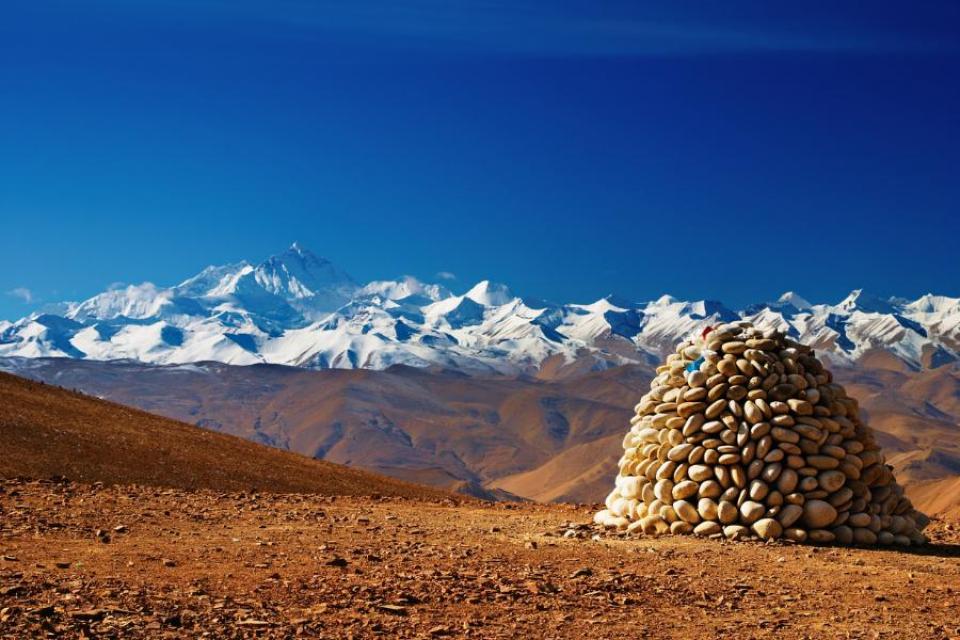Introduction
Kala Patthar is a must-visit viewpoint on the iconic Everest Base Camp (EBC) trek. It lies at an impressive altitude of 5,545 meters (18,192 feet). It offers undisturbed views of Mount Everest and its surrounding peaks. Unlike Everest Base Camp, which sits close to the mountain, the Kala Patthar viewpoint provides a wide-angle panorama, making it the best spot to admire the magnificence of the Himalayas.
Trekkers prioritize Kala Patthar because it delivers what many dream of. It savors a clear view of the Everest summit, the Khumbu Glacier, and neighboring giants like Nuptse and Pumori. It is a rewarding destination that combines the thrill of high-altitude trekking with the ultimate Himalayan vista. For many trekkers, standing atop Kala Patthar becomes the highlight of their Everest adventure, a moment of victory and pure natural amazement.
Overview of Kala Patthar
Location:
Kala Patthar lies in the Khumbu region of Nepal at an altitude of 5,545 meters (18,192 feet). It is a short but steep ascent from Gorak Shep (the last settlement along the Everest Base Camp (EBC) trek).
Significance:
Kala Patthar is the highest accessible viewpoint on the EBC. It is renowned for its unparalleled views of Mount Everest and other Himalayan peaks.
Views vs. Base Camp:
While Everest Base Camp allows trekkers to feel close to the mountain and witness the Khumbu Icefall up close, due to its proximity, it doesn’t offer clear views of Everest’s summit. On the other hand, Kala Pathhar provides a more comprehensive perspective, making it the ultimate spot for photography and quiet contemplation.
The Journey to Kala Patthar Viewpoint
Starting Point:
The journey to Kala Patthar begins at Gorak Shep (5,164 meters/16,942 feet), the final settlement on the EBC trek. It serves as a staging point for the trek to both Everest Base Camp and Kala Patthar.
Trek Distance and Time:
The distance from Gorak Shep to Kala Patthar is approximately 2 kilometers (1.2 miles). While this may seem short, the steep trails and high altitude make it a challenging hike, typically taking 2–3 hours to ascend and 1–2 hours to descend.
Challenges:
- Steep Pathways: The path to Kala Patthar is vertical and uneven, demanding trekkers to maintain a slow and steady pace.
- High-Altitude Conditions: The thin air at over 5,000 meters makes breathing difficult, and trekkers must be aware of altitude sickness symptoms such as headaches and fatigue.
- Cold Temperatures: Early morning or late afternoon hikes can expose trekkers to freezing conditions, so layering up is essential.
What Makes Kala Patthar the Best Viewpoint?
Dramatic Views:
- You can see Mount Everest summit in all its glory From Kala Patthar unobstructed by nearby peaks.
- The viewpoint also offers stunning vistas of Nuptse, Pumori, Lhotse, and the Khumbu Glacier, making it a feast for the eyes and camera.
Unique Outlook of Everest:
- Everest Base Camp provides closeness but lacks comprehensive views of Everest’s peak due to its lower elevation.
- Kala Patthar, however, offers a unique vantage point, with Everest towering majestically against the backdrop of the vast Himalayan range.
Sunrise and Sunset Magic:
- Watching the sunrise from Kala Patthar is an ethereal experience. As the sun ascends, the peaks glow with golden hues, creating an unforgettable sight.
- Sunset is mesmerizing when the fading light casts long shadows across the valleys. This view enhances the mystical beauty of the region.
|
Kala Patthar Highlights |
Details |
|
Elevation |
5,545 meters (18,192 feet) |
|
Accessibility |
A short trek from Gorak Shep |
|
Best Time for Views |
Sunrise and sunset |
|
Notable Peaks Visible |
Mount Everest, Nuptse, Pumori, Lhotse |
|
Experience |
Panoramic views, stunning light effects, and a peaceful environment |
Kala Patthar’s reputation as the crown jewel of the EBC trek is well-deserved. It’s not just a viewpoint; it’s a spiritual and emotional high point that rewards trekkers with memories to last a lifetime.
Highlights of the Kala Patthar Trek Experience
- Sense of Achievement: Reaching the summit of Kala Patthar is a rewarding experience that fills trekkers with a profound sense of accomplishment. The steep climb and high-altitude conditions make this a moment to cherish.
- Photography Opportunities: Kala Patthar provides unparalleled chances for photography. From here, you can capture the breathtaking panorama of Mount Everest, Nuptse, Pumori, and the surrounding Himalayan giants, along with striking images of the Khumbu Glacier below.
- Close Proximity to Khumbu Glacier and Icefalls: The trek brings you close to the mighty Khumbu Glacier and its mesmerizing icefalls, offering a unique perspective of the glacial terrain that adds to the trek’s allure.
Best Time to Visit Kala Patthar
- Ideal Seasons for Clear Views:
- Spring (March to May): During spring, the weather is generally stable, with clear skies and moderate temperatures. Rhododendrons in lower altitudes also add a splash of color to the trek.
- Autumn (September to November): Known for crisp air and excellent visibility, autumn is the best season for spectacular views of Everest and the surrounding peaks.
- Weather Conditions: Expect colder temperatures at higher altitudes, especially in the early mornings and evenings. Winter trekkers should prepare for extreme cold, while monsoon trekkers may face rain and clouds.
- Timing Tips for Sunrise or Sunset:
- Sunrise: Climbing before dawn rewards trekkers with a golden glow illuminating the Himalayan range.
- Sunset: The setting sun bathes Everest and the nearby peaks in a warm hue, creating an unforgettable view.
Difficulty Level of Kala Patthar on the EBC Trek
- High-Altitude Challenges: Trekking to 5,545 meters requires proper acclimatization. Altitude sickness is a concern, so it’s crucial to ascend gradually and include rest days.
- Physical Stamina: The ascent is steep and requires good physical fitness. Trekking poles can help you manage the demanding climb.
- Preparation Tips:
- Gear: Wear layered clothing, sturdy boots, and carry a headlamp for early-morning climbs.
- Hydration: Drink plenty of water to combat altitude effects.
- Pacing: Take it slow, especially in the thinner air near the summit.
Cultural and Scenic Experiences Along the Way
Sherpa Hospitality:
As you trek through the Everest region, you’ll encounter warm hospitality from Sherpa communities. Visits to monasteries and local villages add a cultural dimension to the journey.
Unique Flora and Fauna:
The Everest region boasts diverse biodiversity, with Himalayan wildlife like yaks and colorful pheasants often spotted along the trail.
Other Landmarks:
En route to Kala Patthar, trekkers pass through iconic locations such as Namche Bazaar, Tengboche Monastery, and the Khumbu Glacier. These spots enhance the scenic and cultural richness of the trek.
Practical Tips for Kala Patthar
- Gear Checklist:
- Trekking Poles: These are invaluable for the steep ascent and descent, providing balance and reducing strain on your knees.
- Layers for Warmth: The altitude brings freezing temperatures, especially during early morning or evening treks. Pack thermal wear, an insulated jacket, gloves, and a beanie.
- Headlamp: Essential for pre-dawn or late-evening climbs to ensure visibility on rocky paths.
- Stay Hydrated: Drink plenty of water to combat the dehydrating effects of high altitude. Avoid alcohol, as it can worsen altitude symptoms.
- Pace Yourself: Trek slowly and steadily to adjust to the thin air and reduce the risk of altitude sickness. Rest frequently and listen to your body.
- Hire a Guide: A guide familiar with the Everest region ensures a safer experience, helping you navigate trails and offering insights about Kala Patthar and its surroundings.
Comparing Kala Patthar with Other Viewpoints on the EBC Trek
Kala Patthar vs. Everest Base Camp:
- Mountain Views: Everest Base Camp offers a close-up experience of the Khumbu Icefall and the base of the world's highest peak. However, it lacks the panoramic vistas of Mount Everest’s summit and surrounding peaks that Kala Patthar provides.
- Elevation: Kala Patthar, at 5,545 meters, is significantly higher than Everest Base Camp (5,364 meters), offering a more elevated vantage point.
Other Viewpoints in the Region:
- Tengboche Monastery: Famous for its spiritual ambiance and partial views of Everest.
- Gokyo Ri: Located in the Gokyo Lakes region, it provides sweeping views of Cho Oyu, Everest, and Makalu.
- How Kala Patthar Stands Out: Its proximity to Everest and its summit views, combined with the breathtaking sunrise and sunset experiences, make Kala Patthar a must-visit spot that overshadows other viewpoints.?
Conclusion
The Kala Patthar viewpoint is the crown jewel of the Everest Base Camp trek. Its unmatched views of Mount Everest, Nuptse, and Pumori, and the thrill of high-altitude trekking, make it an unforgettable experience. Beyond its natural beauty, the sense of achievement after reaching this iconic viewpoint is unparalleled.
If you’re planning the Everest Base Camp trek, ensure Kala Patthar is a priority on your itinerary. Prepare thoroughly, acclimatize well, and enjoy the adventure for the ultimate Himalayan journey. This viewpoint promises memories that will last a lifetime, solidifying its reputation as the best place to witness the grandeur of the Everest region.
Author: Pranesh Maharjan
Date: 12th December, 2024
Related Trip





